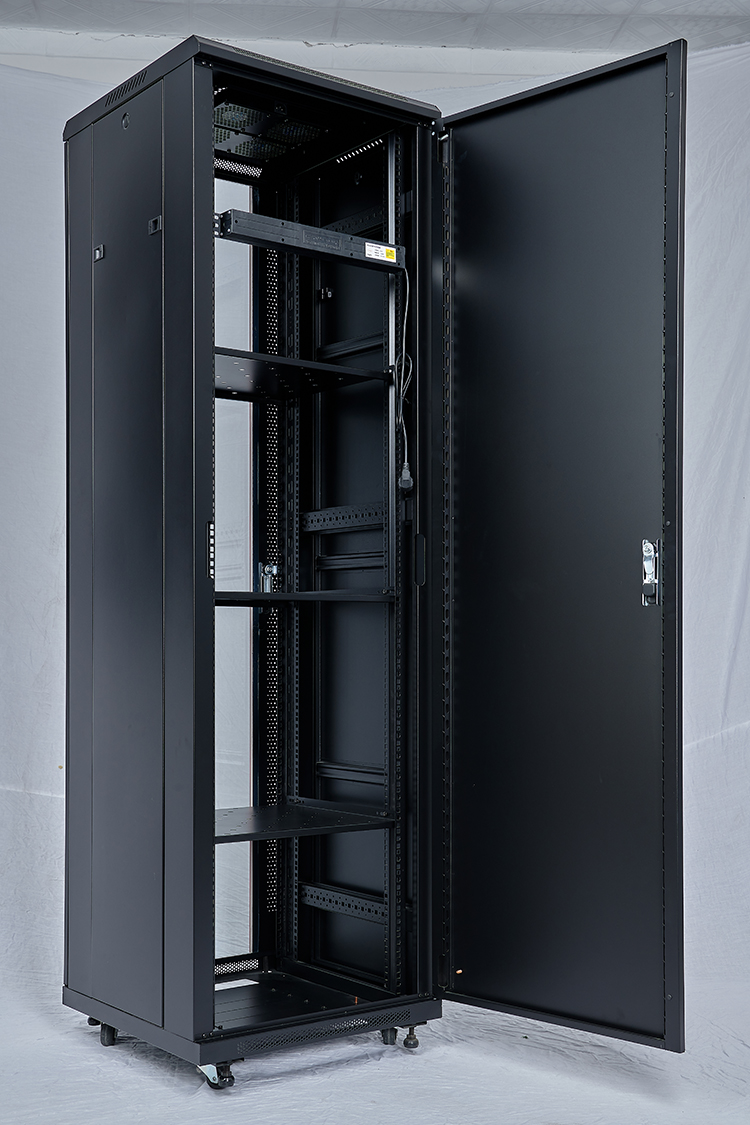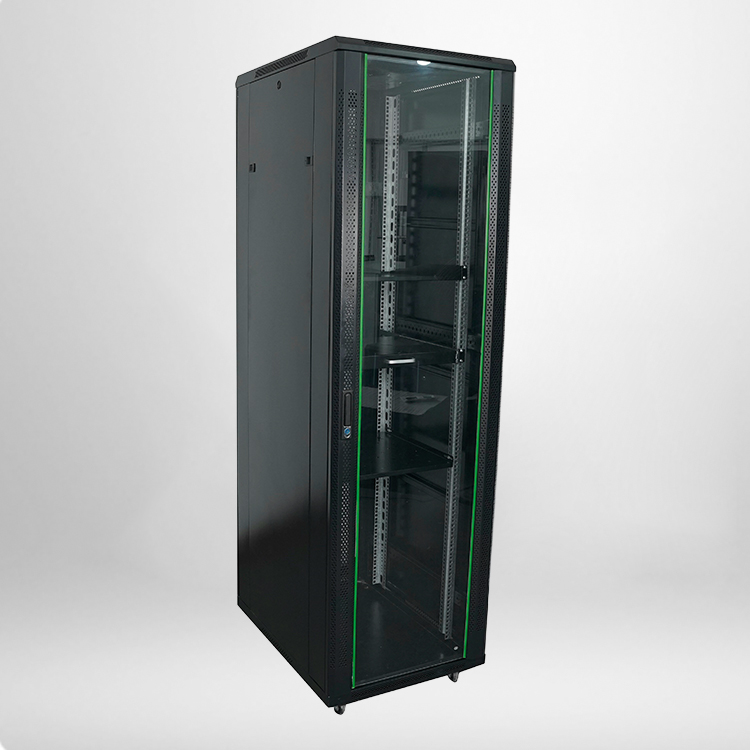
In today’s digital age, where networks power homes, offices, and data centers, keeping networking equipment organized and protected is essential. A network rack cabinet serves as a central hub for housing devices like routers, switches, servers, and patch panels, solving common challenges of clutter, inefficiency, and equipment damage.
Core Design for Functionality
Network rack cabinets are built around standard measurements to fit most networking gear. The “U” unit—1.75 inches (44.45 mm) in height—is the key standard, with cabinet heights ranging from 4U to 42U or more. This uniformity ensures devices from different manufacturers can fit seamlessly, eliminating compatibility issues. Most cabinets also follow a 19-inch width standard for the internal mounting rails, a size widely adopted for networking equipment.
The cabinet’s structure is typically made of durable steel or aluminum. Steel cabinets offer higher strength, making them suitable for heavier equipment like servers, while aluminum options are lighter and resist corrosion, ideal for environments with varying humidity. Many cabinets also have removable side panels and front/back doors, allowing easy access to equipment during installation or maintenance.
Airflow and Heat Control
Heat buildup is a major risk for networking equipment, as excessive heat can slow performance or cause hardware failure. Network rack cabinets address this with thoughtful airflow designs. Most models have perforated doors—both front and back—to let cool air enter and hot air escape. Some high-performance cabinets include built-in fan units, usually mounted at the top or bottom, to circulate air more actively. These fans can often be adjusted for speed, or set to turn on automatically when a certain temperature threshold is reached.
For cabinets holding heat-intensive devices like multiple servers, some designs add blanking panels. These panels fill gaps between equipment, preventing hot air from recirculating back into cool air zones. Additionally, cable management features (like cable trays or routing slots) keep wires neat, avoiding blockages that disrupt airflow.
Cable Management Solutions
Tangled cables are not just unsightly—they make troubleshooting difficult and can damage connections when moved. Network rack cabinets include dedicated features to keep cables organized. Many have vertical cable managers along the sides or rear of the cabinet, with slots or hooks to route cables vertically. Horizontal cable managers, often attached to the mounting rails, help guide cables between devices on the same level.
Some cabinets also have cable entry points with rubber grommets, which protect cables from being cut or frayed by the cabinet’s metal edges. Labeling tabs or slots are another common feature, letting users mark cables for easy identification—saving time when replacing or testing equipment.

Security and Environmental Protection
Protecting equipment from unauthorized access and environmental damage is another key role of network rack cabinets. Most models come with lockable front and back doors, using key locks or combination locks to restrict access to sensitive gear like servers holding confidential data. Some high-security cabinets also have lockable side panels and even alarm systems that trigger if the cabinet is opened without permission.
Environmental protection is equally important. Cabinets shield equipment from dust, which can clog vents and cause overheating, and from accidental spills or physical bumps. For outdoor or harsh environments, there are weatherproof network rack cabinets, with sealed doors and corrosion-resistant materials to withstand rain, extreme temperatures, and dust.
Versatile Applications
Network rack cabinets are used across various settings. In small offices, a compact 6U or 9U cabinet can hold a router, switch, and patch panel, keeping the network setup tidy in a closet or utility room. In larger offices or schools, taller cabinets (12U to 24U) manage more equipment, supporting multiple departments’ network needs. Data centers rely on full-height cabinets (42U or more) to house rows of servers and networking gear, with cabinets arranged in aisles for easy access.
Even home networks benefit from smaller network rack cabinets. A 4U or 6U model can organize a home router, mesh network nodes, and a small server for home media storage, eliminating the clutter of devices on a shelf or desk.
In short, the network rack cabinet is a foundational tool for any network setup. Its focus on organization, heat control, security, and versatility makes it indispensable for keeping networking equipment running reliably and efficiently, no matter the size of the space or the complexity of the network.


